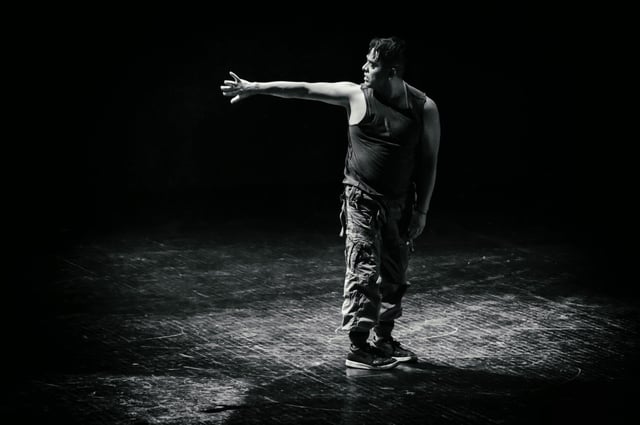
Can you command the stage when you speak the way an actor does? To accomplish that, you need to use the stage itself! Here are three ways to do so and achieve true stage presence.
When you deliver a speech or presentation, do you use the stage as a tool to develop power and influence? Do you ever even think of the stage itself when you consider that success equals a dynamic speaker plus an effective keynote speech or talk?
Like all actors, I'm keenly aware of my performance space in terms of how powerfully what I'm saying reaches an audience. And if you're focused on keynote speaker training or other effective presentation skills, you should think this way too.
From job interviews to live performances, audiences respond to what you show them. The way you hold yourself and move tells people how you feel about your ideas and yourself. Learn more with my free cheat sheet, "5 Secrets of Powerful Body Language."
Today, I'd like to discuss three ways you can develop physical expressiveness as a speaker through how you employ the stage and your place on it. Nothing could be more basic in terms of moving the people who are watching you. Visuals matter—and the stage is part of your spatial relationship with listeners. Let's look at how you can use it effectively.
Time to Get Out of Your Head and Into Your Body!
If there's a malady that affects all of us as public speakers these days, it's The Talking Head Syndrome. Face it—we all live too much in our heads, and nowhere is this truer than when we present. Our mantra is usually "Content, content, content"; and our topic never comes to life if we remain statue-like behind a lectern, reading from notes or PowerPoint.
As a speaker, you need to get your body into the act! Did you ever wonder, for instance, what the purpose of a gesture is? It's to support, demonstrate, or amplify the idea you're expressing. In nearly everything we say, words alone can't convey the emotion, intensity, and commitment behind our ideas. So we use body language to make the idea come vibrantly alive.
Now, imagine more than gestures, with your entire body expressing what you're thinking and feeling. And equally important, moving around the stage. What's happening now? Well, there's something visually interesting about you, not just your slides, for the audience to look at. And every time you come closer to listeners, your presence and passion come through more fully. Whatever the actual dimensions of your performance space, you truly command the room.
Create the Conditions, Not the Actual Gesture
As helpful and necessary as gestures are, there are rules concerning their use. They should be relatively few in number, and definitive, i.e., they should begin and end cleanly. Your gesture should occur on the expression, not before or after it. The same gesture shouldn't be repeated excessively so it becomes distracting.
The overriding "rule" about gestures, however, is a simple one: they shouldn't in any way distract or detract from what you're saying. In fact, what I tell my speech coaching clients about their own gestures, is that they shouldn't think about them at all. "Instead (I say), "invest yourself in what you're saying, and the gesture will arise naturally and organically."
Here's another way to say that: Create the conditions for the gesture, not the gesture itself. When you do that, you will respond physically because you simply have to at this moment—you can't not do so any longer! Imagine yourself moving around the stage (per the discussion above), gesturing powerfully at the exact moment this physical expression is needed. It's another way for you to command the stage with complete ease and confidence.
Make the Stage an Element of Your Performance
Finally, let's talk about how an actor uses a stage strategically, and how you can do the same in your presentations for greater executive presence. A stage is divided per stage directions in an invisible grid that actors and directors use in "blocking" out a performance. A director may say to a performer, for instance, "Cross up-right to the table just before you deliver the line."
These directions are understood from the actor's, not the audience's point of view. So, "right" means the left side of the stage as you are looking at it from the audience, and vice versa. Since many stages are raked or tilted slightly upward to aid an audience's view of the performers, "upstage" means toward the back wall, and "downstage" means closer to the audience.
Now, get a little more specific in your mind: "Down-right or DR," "Down-center or DC," "Up-left or UL," etc. Can you sense which stage position is the most powerful in terms of your impact on the audience? — It's DC, or Down-center. That's center-stage, closest to the house or seats.
Here's how you can use this knowledge in commanding a stage: Place yourself in the strongest position at the most important moments of your talk. Generally, that's your Introduction and Conclusion, when you need ways to grab the audience (in your opening), and end vividly and memorably (in your closing). . These are the moments of your greatest influence. So deliver them Down-center! Explore using the rest of the stage for variety; and generally stay in one spot for each main point. But use that DC position for maximum leverage and leadership presence.
You should follow me on Twitter here.



